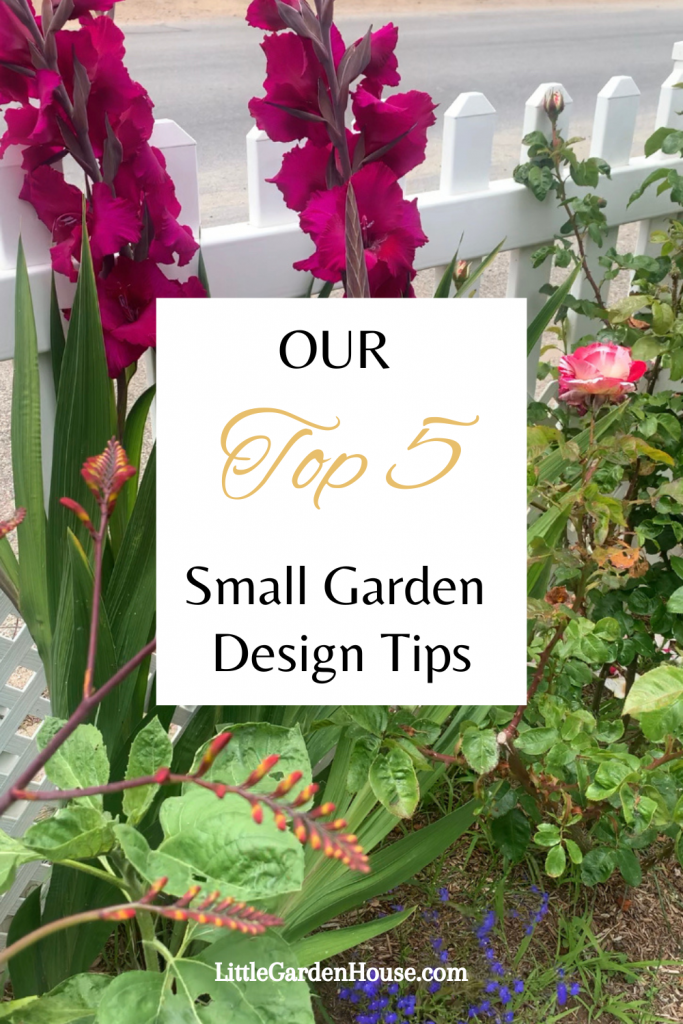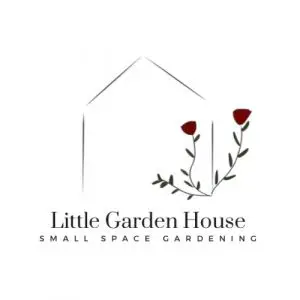Although small gardens at first glance may appear to be easier to maintain. When you have a small garden, there is much less space to hide any plants that are not doing well, clashing colors or empty patches. In a small garden, the cohesiveness of the space is also more important. Because of this, in some ways it can be more challenging in a small garden to get it exactly right.
A small space garden can provide all the impact, beauty and relaxation of a large garden with less work if the right plants are chosen for the space and the amount of maintenance required suits the gardener. Follow our top tips for small designing a small space garden below to create a space that you can love, and spend more time relaxing and than working in.

1. Choose the right plant for the right place.
This tip might sound obvious. However, no matter the enthusiasm you have for a certain plant, if you do not live in an area where that plant will thrive it is most likely not going to be happy in your garden. That is, without an enormous amount of work on your part.
Rather than finding plants that you like, and then researching whether or not they will do well in your garden. We recommend the other way around.
Carefully examine the conditions in your garden, record the light and how the sun moves throughout the day, test the soil, record the temperature and know how it changes throughout the year and understand how much rainfall you will receive versus how much irrigation you are willing to provide.
Then using this information, research which plants will thrive in your garden. Using this method to select plants will ensure that you will have to put the minimum effort into making the plants in your garden happy and be able to spend most of your time enjoying your space.
2. A combination of starting seeds and purchasing plants.
To ensure a constant blooming of beauty in your garden, we recommend purchasing plants that are already established and then creating a cycle of seed germination.
If you plan to start your garden entirely from seed you will have both empty spaces and the a long wait to get that lush thriving garden look.
However if all of your plants are purchased the price of your garden will increase greatly.
We recommend purchasing established plants for the main structural pieces of your garden, for example you may purchase a well-established Meyer lemon tree to have in a pot or in the ground.
You can also purchase shrubs and other main perennial plants for your small space. Perennials can take a long time to grow from seed and this way you will have healthy plants right from the start.
Once you have the main structure of your garden established with healthy plants which, if you do purchase them will be a lot quicker. You can then turn your attention to starting seeds.
The easiest seeds to grow are vegetables, and annuals. Annuals in particular will provide fast growth and beautiful color they are easy to grow and can often be started directly in the soil.
For the most success, also apply step one of right plant right place to your seed selection. Often, the annuals that you start in the soil will establish themselves in your garden, spreading seed and popping up year after year with zero effort from you.
You can even collect your own seeds in the fall and start them again for the spring. We have found in our garden however that our favorite flowers the ones that seem to do the best spread their own seed and pop up every spring. A good example of this in our garden is the California poppy, we planted it once and it continues to pop up every year.
3. Minimize the color palette
We as much as anyone understand the temptation to buy all the plants that you like when you’re in the nursery. And in a very large garden, this might be fine. However, in a small space garden it is crucial to be cognizant of your color scheme.
As counterintuitive as it may sound the fewer colors that you put in a small space garden will result in a bigger impact. Too many colors will make the space feel cluttered and appear smaller. Take time before you go plant shopping to think about the vibe or feel that you want to have in your garden, and then think about the colors that create that feeling.
Alternatively use your surrounding environment to inspire your color scheme. In our garden we have a lot of green because we wanted lush relaxing feel but we also have pops of blue picking up on the paint color of our trim on our house.
When you were shopping in the nursery, create a small palette in your shopping cart combine and group the colors together and see how they go together.
Another tip within this one is to buy a lot of one plant. For example we love blue lobelia and we have it in our borders instead of buying one or two blue lobelia I purchased five or six and planted them throughout the border which created a feeling of rhythm, and consistency throughout the garden. You don’t have to get multiple types of plants in a few colors even one plant planted over and over again can create a lot of impact and beauty in the garden.
4. Subdivide the Space to create an adventure
Don’t settle for the boarders you were given, redesign the space, break it up into smaller areas. Ideas include..
- A vegetable or herb area
- A seating/ relaxation zone
- A space for friends to gather
- Areas be types of plant
Breaking up the space creates a feeling of adventure and the ‘secret garden retreat feel’
5. Don’t be afraid to make it what you want
You might feel limited by having a small garden but it’s not necessary, you can make your garden exactly what you want to be simply by using products and plants that work in a small space.
Have you always wanted to gather friends around a fire pit, you can get or build fire pits that are small enough for a small garden. If you have a really really small garden such as a patio you can even get a little portable fire pit.
Have you always wanted to have friends over for dinner in your garden but don’t want to take up your whole garden with a dining table? You could get a collapsible table that you can expand when people come over.
Alternatively, if you’re more concerned about visually taking up the space with a dining table or a bistro set you can always subdivide the space using plants and put the furniture behind them. That’s what we did with our patio area. We wanted a tropical garden, with a lush ‘full of plants’ feel, but we also wanted the space to be functional as an entertainment space. Our solution was to subdivide the space with a wall of plants and have the dining table hidden behind them.
This has had a wonderful effect of making the area feel more tropical whilst also creating a magical dining space that is surrounded by plants.
You really can create whatever kind of space you want in your garden just look for products that fit the space or that are movable or expandable.
Final thoughts
Our overall advice for designing a small garden is to dream big, think big.. and then just adapt small by using plants that like small spaces and products that can be used in small spaces.
Imagine how you want to feel in the space, and what you want to use it for and make sure you include that in your design. Use colors that evoke the feelings you want to feel when you are in the space, and most importantly choose plants that have a maintenance level that is reasonably achievable for you. If you follow the steps you will have a garden that is a truly wonderful asset in your life rather than a heavy workload.
If you found this article helpful, please check out our other articles and follow us on Pinterest for more garden tips.

